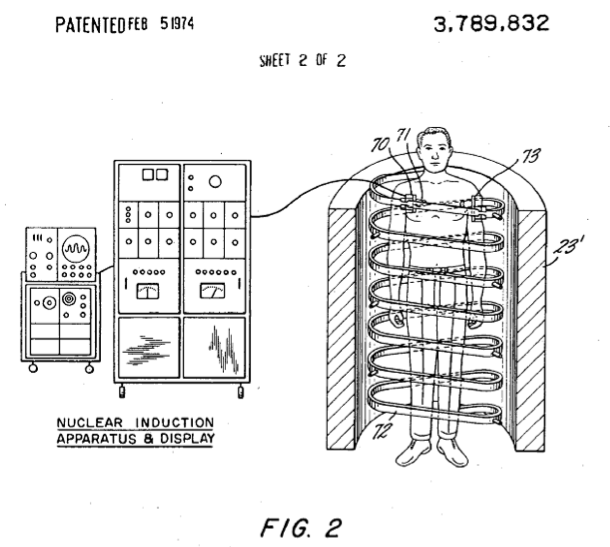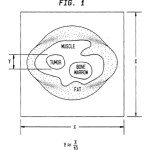Question from Felix:
Hey Invention Geek,
Is there a patent for the MRI machine? If so, who holds the patent?
Thanks for your question, Felix!
The short answer is: yes, there are, in fact, a few of patents associated with the development of the modern MRI.
The slightly longer answer includes stories of betrayal, intrigue, and full page ads in the New York Times.
First of all, Raymond Damadian is widely credited with the initial discovery of Magnetic Resonance Imaging (MRI).
After exposing tissue samples to nuclear magnetic resonance, Damadian observed a difference between tissue in a cancerous tumor and healthy tissue. He published an article in 1971 in the journal, Science, about his findings. In collaboration with other doctors, the first MRI for a full body scan was built in 1977. Damadian named it the “Indomitable,” because of the seven years of complex work needed to finish the project.
He obtained US patent 3,789,832 for the MRI machine, called an “apparatus and method for detecting cancer in tissue,” in February of 1974 and was eventually inducted into the National Inventor’s Hall of Fame for this achievement in 1989.

An image from Damadian's MRI Patent, issued Feb 5, 1974.
Now, while credit for the original MRI scanning machine goes to Dr. Damadian, credit for the development and refinement of magnetic imaging — which is what helps the machine do what it does as well as it does it — belongs mainly to chemist Dr. Paul Lauterbur. Damadian’s original patent had included the use of nuclear magnetic resonance (NMR) for diagnostic imaging, as it ahd been discovered a few decades earlier, but it turned out to be fairly inaccurate and was deemed unsuitable for diagnostic purposes.

Lauterbur's 1992 patent on NMR magnetic imaging.
Lauterbur’s work developing the use of NMR for magnetic imaging was crucial in the ultimate success of the MRI Machine as a diagnostic tool. The doctor worked for decades to improve the accuracy and reliability of the imaging process. In 1992, he was awarded patent 5081992 for a “method for calculating localized magnetic resonance spectra.”
In 2003, Dr. Lauterbur and British chemist Peter Mansfield were jointly awarded the Nobel Prize for their work in the field.
But Dr. Damadian was not to be forgotten. After Lauterbur was awarded the Nobel prize in 2003, Damadian (or friends, as some stories have it) took out full page ads in the most popular newsparers denouncing Lauterbur’s win and demanding reconsideration. While there is no appeals or recall process for a Nobel Prize, Damadian did receive additional recognition in 2004 when he was awarded a Bower Award for scientific excellence by the Franklin Institute.
Dr. Lauterbur was finally given a well-earned place in the National Inventor’s Hall of Fame in 2007.
Both men contributed greatly to the advancement of modern medical diagnostic technology as we know it.
Have Your Own Question for the Invention Geek?
Ask away! If we choose to publish your answer online, you’ll get a free patent mug. Submit your question now!
